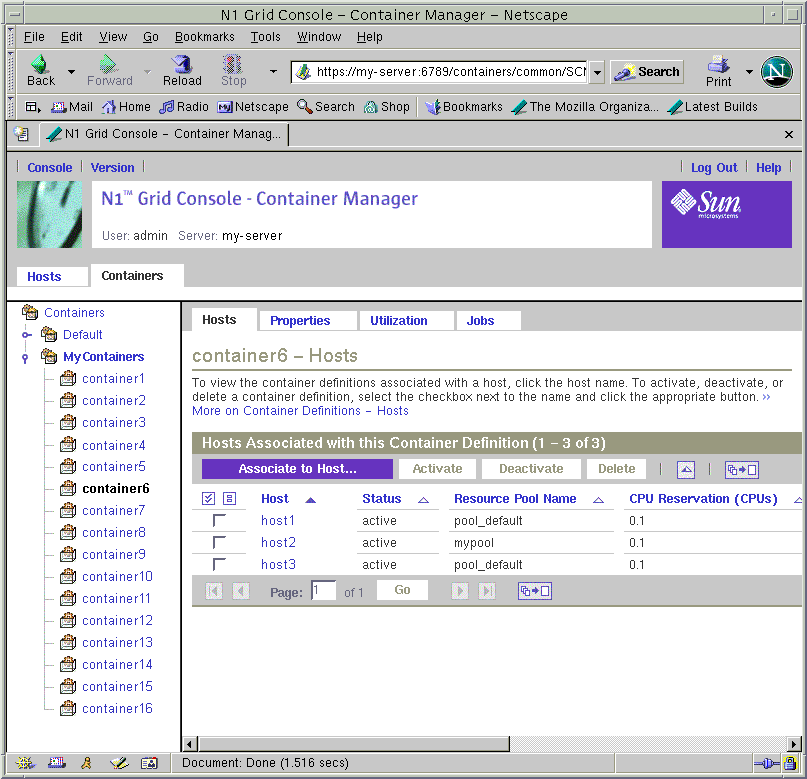Activating or Deactivating Containers
A container's resource boundaries are not enforced while in a defined or inactive state. You must activate the container to enable this enforcement. Conversely, when you do not want these limits enforced, you must deactivate the active container. An active container can be deactivated without losing the resource boundaries you've established. For more information, see Container States.
An existing container definition can be used to create new active containers with the Associate Host to Container wizard. You activate an inactive container or deactivate an active container with a button.
To Activate a Defined Container
-
If the Container Manager GUI is not already open, access it as described in To Launch the Container Manager GUI.
-
In the Containers view, select the name of the container definition.
If the container definition is part of a group, select the group from the navigation window to display the container definitions in the right pane.
-
Select the Hosts tab in the right pane.
The Hosts Associated with this Container Definition table appears. All hosts that the selected container definition is currently associated with are listed in the table.
Figure 3–19 Sample: Hosts Associated with this Container Definition Table

-
Click the Associate Host to Container button.
The Associate Host to Container wizard appears. This wizard is similar to the New Container wizard.
-
For the remaining steps to finish activating the container, complete steps 8 - 14 of To Create a User-Based or Group-Based Active Container.
To Activate an Inactive Container
-
If the Container Manager GUI is not already open, access it as described in To Launch the Container Manager GUI.
-
In the Hosts view, select the host with which the container is associated.
-
Select the Containers tab in the right panel.
A table appears that lists all containers that are associated with that host.
-
To enable the Activate button, select the checkbox of the container to be activated.
-
(Optional) Select the Properties tab.
You can modify the properties of the container. For more information, see Modifying Containers.
-
Click the Activate button.
The container is activated and the resource boundaries are being enforced by the kernel.
To Deactivate an Active Container
-
If the Container Manager GUI is not already open, access it as described in To Launch the Container Manager GUI.
-
In the Hosts view, select the host with which the container is associated.
-
Select the Containers tab in the right panel.
A table appears that lists all containers that are associated with that host.
-
To enable the Deactivate button, select the checkbox of the container to be activated.
Figure 3–20 Sample: Containers View with Deactivate Button Enabled

-
(Optional) Select the Properties tab.
You can modify the properties of the container. For more information, see Modifying Containers.
-
Click the Deactivate button.
The container is activated and the resource boundaries are not being enforced by the kernel.
- © 2010, Oracle Corporation and/or its affiliates
